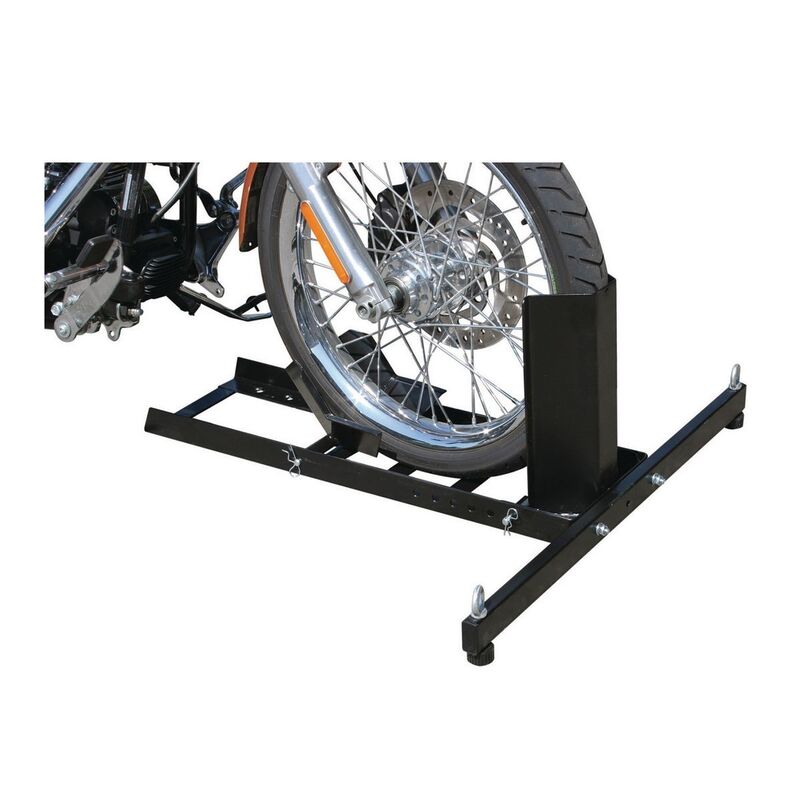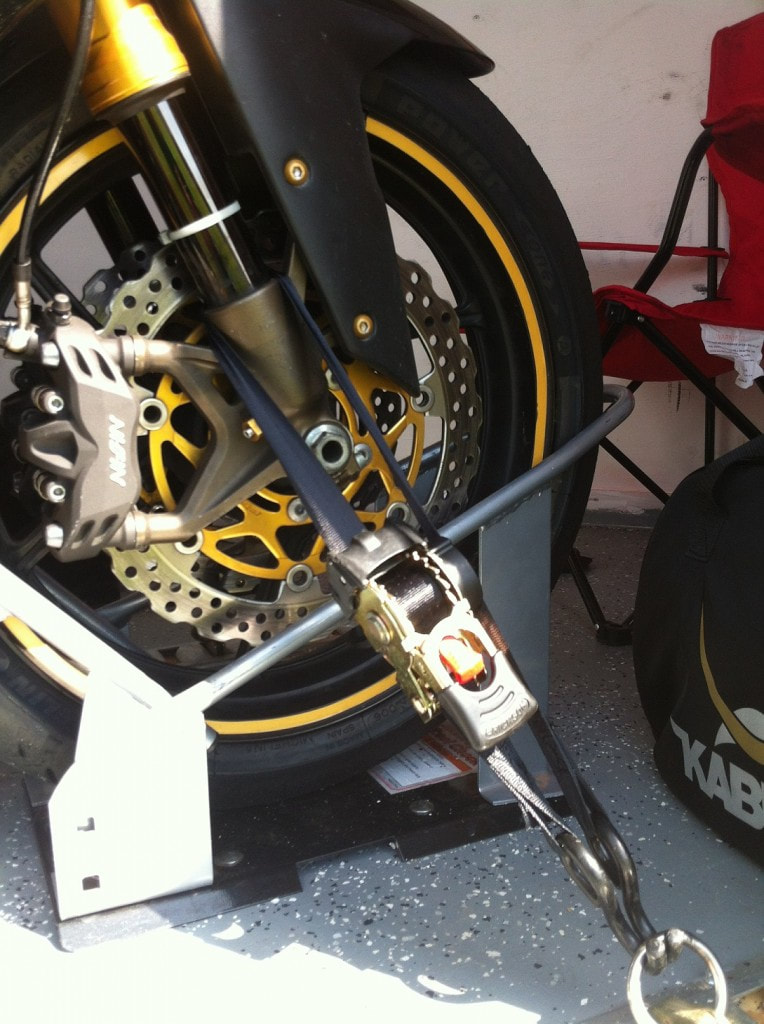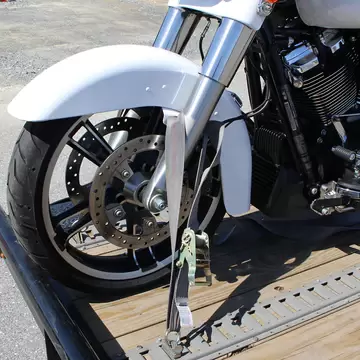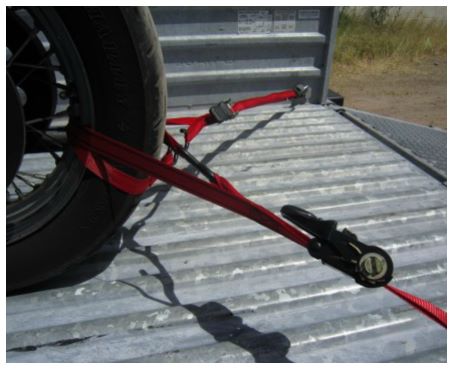|
It has happened to us all. The engine in your bike / car / truck / boat / lawnmower / etc. was running just fine and all the sudden it is missing, coughing, sputtering, shuddering, stalling out, and maybe even now it won't start, even though you have lots of gas and the engine spins up normally when you hit the starter...it just won't start or runs like crap. What the heck? To be fair, there are LOTS of reasons a properly running engine can suddenly go bad, but this posting is about one of the most common reasons: Bad Gas...or more accurately, water in the gas tank. So when are you justified in thinking the problem may be bad gas when your engine suddenly starts to run badly?
Why is water in your gas a problem? Gasoline burns. Water? Not so much. A little water in your gas can make the engine run badly. A big slug of water getting into your fuel system can bring your engine to a sudden and ignoble stop. But how does water get into your gas tank? There are lots of possible ways. The ugly ones all revolve around the fuel having been handled badly before it got to you. Perhaps a storage tank had a leak or a loose lid that let rainwater get in. But that sort of thing is very rare. The most common way for water to get into gas tanks is for it to come in as humid air. Air can hold more water when it is warm than when it is cold. That is why the weather report always talks about Relative Humidity. The RH is tells us how much water vapor is dissolved into the air relative to how much it can hold at that specific temperature. So if if an air sample is at 50% RH at a specific temperature, it will have a higher RH at a lower temp and a lower RH at a higher temperature. The actual amount of water in the air sample will not have changed. What changes with temperature is the air's ability to hold that water vapor in solution. And if you cool it enough, you eventually reach the Dew Point for that air sample, the temperature at which the water vapor starts to condense out of the air, i.e. the water vapor begins to turn into liquid water. If you capture a dry jar full of air outdoors on a warm day, close it up tight, bring it inside and stash it in your refrigerator, when you come back the next day (after the air has gotten nice and cold inside the jar) you will find some liquid water inside the jar. As the air cooled it could no longer hold the water vapor, and the water began to condense (water vapor converted back to liquid water). Whatever the relative humidity of the captured air might have been outside, as the air cooled, the relative humidity inside the jar got higher and higher until it got to about 100% (meaning it became as humid as it could be before the water vapor condensed into liquid water in the jar). The more water vapor that was dissolved into the air sample to start with (the higher the RH was when you captured the air), the easier it will be to get the water to condense out as the temperature of the sample falls...and the more water will end up in your jar. This all matters because most fuel handling systems, at least briefly, allow air to get in now and then. Once air is in a storage tank, gas can, or fuel tank, it becomes possible for the moisture in that air to condense into your gas tank. So why are big weather changes harbingers of bad gas? The easy one is a cold snap. Hot humid air got into the tank back when it was warm outside, then a cold night comes around and the humid air in the tank condenses into water as the tank cools. But it is also possible to have a fuel storage tank that has been cold that gets exposed suddenly warmer and more humid air. The warm humid air gets into a cold tank and, bingo, the cold fuel chills the humid air and once again there is water in the tank. Generally, the onset of winter is more likely to cause problems, but springtime can also mess with our fuel supply. Still, why is a little water in a gas tank a problem? What harm can a little water do when mixed with gallons of gasoline? The problem is that they do not mix. Water sinks to the bottom of a tank filled with gas or oil. Here's a sample of some contaminated fuel. The line of separation is the natural result of trying to mix gas and water. The water is the bottom layer. Once water is in the tank, it tends to go to the bottom, which of course is where the fuel pick-up is located (so you can get the last little bit of gas out of your tank as you get near empty). Now, the sample shown above is a badly contaminated sample. Your tank may only have a tablespoon full of water in it. And it may be sloshing around as your vehicle moves so that the little slug of water only rolls by the fuel pick-up now and then, and only briefly at that. That can be enough to make your engine shudder, buck, and cough...and if you are unlucky enough, the fuel pump may suck up enough at one time to stall your engine. So, what to do? We could try to dump your gas tank or suck out the water, but both are usually impractical. Fortunately, there is a better option: Mix the water with something that will burn. Gasoline is not the only flammable liquid in the world. Some liquids, like alcohol, for example, mix beautifully with water and are also flammable. But the liquid I prefer to use is Berryman's B-12. The Berryman company does not pay me a nickel to say nice things about their stuff. This is just the straight skinny. B-12 is GREAT. It is a super fuel system cleaner, but it is a spectacular water dispersant. I carry a can of B-12 with me in each of my vehicles...because you never know when you are going to get a tank of bad gas...and if you do, B-12 is the almost instant cure. And when you can buy it for less than $5 a can, it is absolutely the cheapest miracle cure available on the planet. And yes, I run a can through each of my vehicles once or twice a year just for good measure.
Notice that you are seeing a can of B-12 LIQUID. They also sell B-12 in spray form for spot cleaning fuel system components. It is great, but get the liquid for dealing with bad gas. So, when the day comes that you get the dreaded sputter / cough / stall routine from your engine after a fillup, dump a whole can of B-12 into your gas tank. Give it a few minutes to mix with whatever is in your tank, and then try to go again. In a car, the tank is usually in the back and the engine is usually in the front, so the pipe that connects them can be a bit long. Don't be too dismayed if it takes several attempts to get the improved fuel up to the engine. As a rule, fuel does not flow unless the engine is turning (turning, even if not necessarily running). The moral to that story, by the way, is if you notice your engine starting to run rough after a fill-up, don't wait until it dies to put in the B-12. Put it in right away. The problem will clear much more quickly and easily if the engine is running, even running badly, than if it is not running at all. And then go get another can of B-12 at an auto parts store as soon as you can and stash it in your trunk for the next time you get bad gas. So that's it. Generally, jumping to conclusions when something goes wrong is a bad idea. As a rule it is much better to figure out what has gone wrong before attempting a cure. But in this case, a can of B-12 is so cheap, and putting it into your tank is so easy, even if it fails to fix your problem, you have lost very little time and money. So if you have the least suspicion you are a victim of bad gas, go for it. It can't hurt and it may well be the cure. There are a lot of videos out there about how to load and strap down a bike. Most of them are dead wrong. The best advice is "Don't", as in, "Have it towed by a qualified motorcycle towing service." As you may have already noticed, on my website I recommend one such service here in Austin, https://ATXBikeTow.com However, if you are like me, and have access to a tow vehicle (a car, SUV, or truck with a hitch) you will probably ignore that advice and do it yourself. So, for all the stubborn SOBs like me, here are some tips for how to trailer your bike without hurting it or yourself. FIRST, never try to put a big bike (anything bigger than a 125) into a pickup truck. The load bed is too high, so your loading ramp is going to be too steep, and your bike falling from that high is likely to do thousands of dollars of damage to the bike...and more to you when you try to save it. Just don't. Yes, some folks have gotten away with it...but so many have not. Conversely, DO use a trailer, preferably a motorcycle trailer. There are lots of different types of motorcycle trailers out there, but the single most important characteristic they all share is some sort of feature that helps restrain the front tire of the bike. The simplest is indentation in the front of the trailer like this... That simple pocket in the front of the trailer really helps keep your bike where it belongs. There are other mechanisms out there, all broadly described as a "Motorcycle Wheel Chock". Most can be added to the floor of an ordinary flatbed utility trailer or mounted inside an enclosed trailer. But the truth is, even some blocks of wood nailed to the trailer floor on either side of the front wheel, so the front tire cannot scoot side to side as the trailer bounces around, can be a big help. So don't feel like you need to break the bank to get the job done. But back to trailers vs. pickup trucks...the key issue is that a trailer is going to have a much lower load bed than a truck and that makes the whole operation MUCH safer. One of the best deals in motorcycle trailering is renting a motorcycle trailer from U-Haul. They have great little trailers and they rent them pretty cheap. How to Strap Down a BikeThis is the subject that most often comes with bad advice. Strapping down a bike is done wrong so often that it is hard to find examples of it being done right. The picture above of the bike in a U-Haul trailer is a great example of the WRONG way to strap down a motorcycle for towing...or onto a motorcycle lift for repairs. The approach is the same either way. Note in the photo above that the tie down straps are connected to the forks. That is good, as far as it goes. That is way better than tying the straps to the handle bars...but it still is not right. The problem is that the straps are tied on above the lower half the the fork legs. The upper half the the fork legs move up and down when the bike hits a bump because there are springs inside the fork legs. That is great for your butt when you are riding the bike. You get a nice comfortable ride and your tires stay stuck to the road and make it easier to maintain control over bumpy surfaces. But the fact that the upper parts of the bike will bounce up and down when you hit bumps in the road makes them a TERRIBLE place for the tie down straps. Here's the deal. If you tie off above the springs, every time your bike bounces DOWN, the straps get loose, and that's when your bike falls over in the trailer. Not good. And when the bike bounces back up, the straps can get so tight, so suddenly, that metal parts (like handlebars) can be bent and plastic parts can be broken. Some folks will tell you the way to address that problem is to strap it down REALLY tight, so the suspension is compressed so far the bike cannot bounce. That is also bad advice. The correct way to tie down a bike is to attach the straps below the suspension. You can attach to the wheels / tires, to the axles at the base of the fork legs or the swing arms (rear wheel), or to the lower fork legs. As long as the front wheel of a bike is tied down tight to the trailer, the bike cannot fall over and there is no danger of damage to the suspension or the handle bars. If tying down the rear wheel makes you feel better, do that too. (I almost always do.) Yes, it is true that the main body of the bike will bounce up and down when the trailer hits bumps, but the bike is designed to bounce up and down when it hits bumps. No problem. As long as the wheels stay firmly planted the bike will stay put. There are some tie down accessories that can make the job a little easier, but none of them are necessary. One example is a purpose made harness for the wheels themselves. They are usually used on rear tires because the front wheel is usually too easy for a wheel strap to be necessary. But there are a number of valid ways to get the job done. Here are a few... The bottom line is, if the wheels are tied down tight, the bike cannot fall. You cannot do better than that. If you want to watch a GOOD video on the subject, watch this guy.
Tide Down Demo |
Categories
All
Archives
January 2024
|
|
© WrenchMonster 2018
|
WrenchMonster™ is a Division of DemonLite, LLC.
|













 RSS Feed
RSS Feed